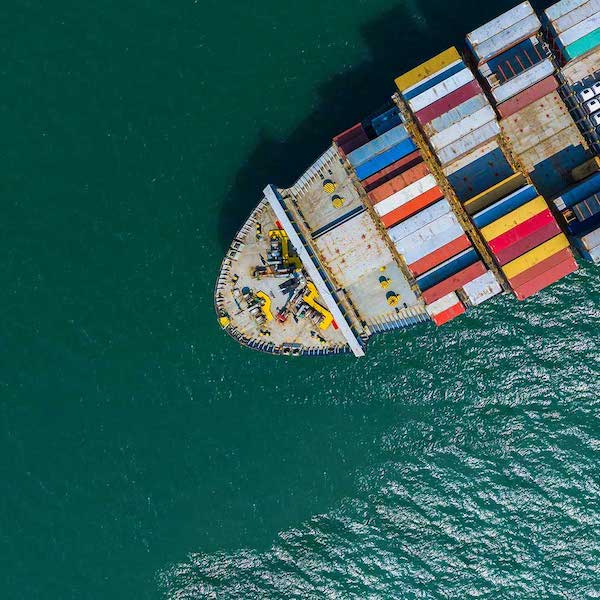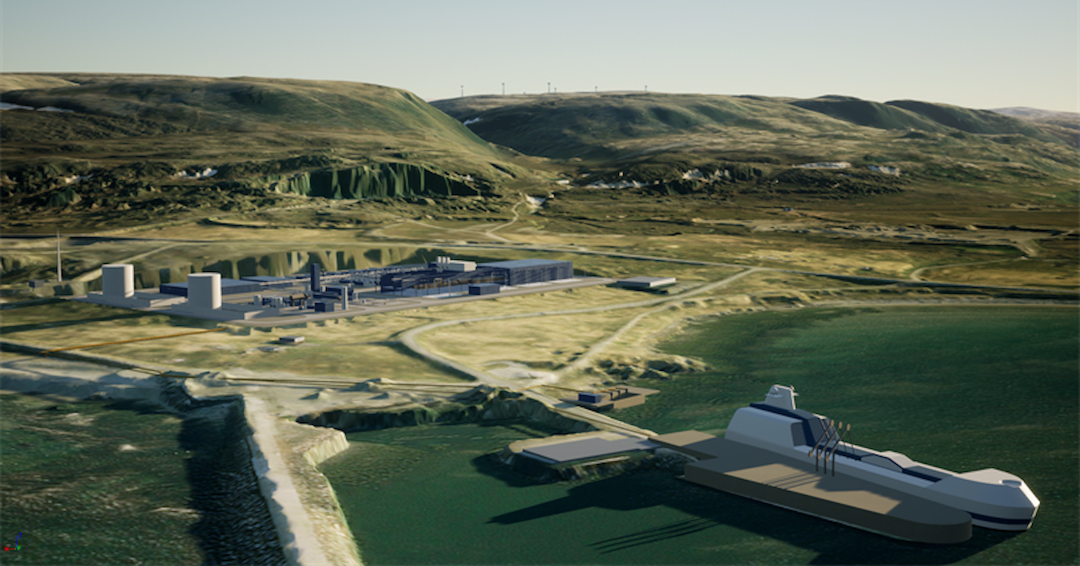Green with ammonia
BRIEFING | Cutting the carbon from ship emissions will not be cheap, but it does not have to be difficult

KEY FINDINGS
■ Shipping accounts for as much carbon pollution as Japan
■ Converting to carbon-free sources of propulsion will cost €1 trillion by 2050
■ Hydrogen produced using wind and solar energy can be stored as ammonia
■ Commercial production of ammonia for fuel has yet to begin
■ The infrastructure for storing and transporting ammonia is already in place
ONE OF THE ironies of global warming is that, as the planet heats up and sea ice in the Arctic melts, ships will be able to take a shorter, more northerly route on once-frozen waterways connecting Asia and Europe that result in less of the carbon pollution that caused the problem in the first place. Now it appears the Arctic could help to eliminate carbon pollution from the shipping industry almost entirely, this time by producing the hydrogen that is expected to power many of the next generation of ships.
Were this to happen, the impact would be significant: the collective emissions of the 100,000 large ocean-going ships amount to 3% of world emissions, meaning that, if shipping were a country, it would fall between Japan and Germany as the sixth biggest emitter of greenhouse gasses. And, at its current rate of growth, the IMO, a UN body that works out global guidelines for shipping, reckons the industry’s emissions will double by 2050 compared with 2008 levels.
Any number of ideas have been put forward that would keep that number down. Some involve technologies that will allow ships to again be driven, at least in part, by wind. Others foresee shipping as remaining entirely mechanised, yet by forms of fuel that do not release carbon when consumed.
Completely converting from carbon by 2050 will cost more than $1 trillion (€1 trillion) by 2050, according figures compiled by, amongst others, UMAS, a consultancy, and Lloyd’s Register, a classification society. But where this will be an expense for the industry, others see the figure as a business opportunity.

One example is Norway, which, since 2020, has had a strategy that promotes development of hydrogen production for specified industries, including shipping and other forms of heavy transport. Although the technology is not yet available that would allow ships to use hydrogen as a fuel, three projects in the northern part of the country say they will be ready to deliver hydrogen, in the form of ammonia, once the technology is available. One of them, Green Ammonia Berlevåg (depicted above in an artist’s conception), located at the port in the town of the same name close to border with Russia, is due to come on-line in 2026 and plans to provide fuel to the increasing number of cargo ships sailing in Arctic waters.
Fuelling Arctic shipping, however, may only ever be a sidelight. In Norway alone, investments in the maritime industry amount to 4.5 billion kroner (€430 million), and alternative fuels are rapidly being introduced: the country’s first battery-powered ferry entered service in 2016; today, 80 of the 200 or in service are electric. Batteries, though, are too big, provide too little power and are too expensive to make them useful for long-distance shipping and heavy loads. Ammonia, on the other hand, can provide the power ships need at a reasonable cost. And, technologically, there should be few surprises: the process that is used for making today’s carbon-free, or green, hydrogen was developed a century ago, and, as a widely used industrial gas, the infrastructure for storing and transporting ammonia is already in place.
Hydrogen stored as ammonia, as its chemical formula, NH3, indicates, does not contain carbon, and it can be produced one of two ways. The method involving natural gas releases carbon dioxide. If it is captured, the resulting hydrogen, known as blue hydrogen, is considered to be low-carbon. (If it is not captured, it is known as black, grey or brown hydrogen, and does not lead to a reduction in carbon pollution.) Preferable in this context is the the green sort, which is produced by running water through an electrolyser. As long as this process involves a renewable source of energy, the hydrogen it produces is considered carbon-free. In some cases, this will be hydroelectric, in others, as is the case with Green Ammonia Berlevåg, it will be wind. Ironically.
FURHTER READING
■ Decarbonising shipping in the Arctic with green ammonia from Berlevåg (Innovation News Network)
■ Visiting Berevåg: The Winds of Change (Arctic Economic Council)
■ Hydrogen: A new industry for the low-carbon energy transition in Arctic Norway (UiT)
■ Green ammonia could fuel a third of the global shipping fleet (State of Green)
■ Decarbonising shipping – could ammonia be the fuel of the future? (Lloyd’s Register)
■ Ammonia: A Sustainable Fuel Option For Shipping (Forbes)
■ Harnessing ammonia as a ship fuel (DNV)
RESOURCES
■ The Norwegian Government’s hydrogen strategy towards a low emission society
■ Aker Horizons Establishes Green Industrial Hub in Northern Norway
■ Project Barents Blue
■ Glomfjord Hydrogen
■ Green Ammonia as a marine fuel
https://www.youtube.com/watch?v=1x0BcK52CTI
Arctic Business Journal Briefings offer readers summary and analysis of current issues and trends, key firms and coming events. Articles include links to further reading and external resources to give readers a place to begin their due diligence.
As a way to encourage discussion about topics, briefings will also seek to include opinionated commentary submitted by outside contributors.